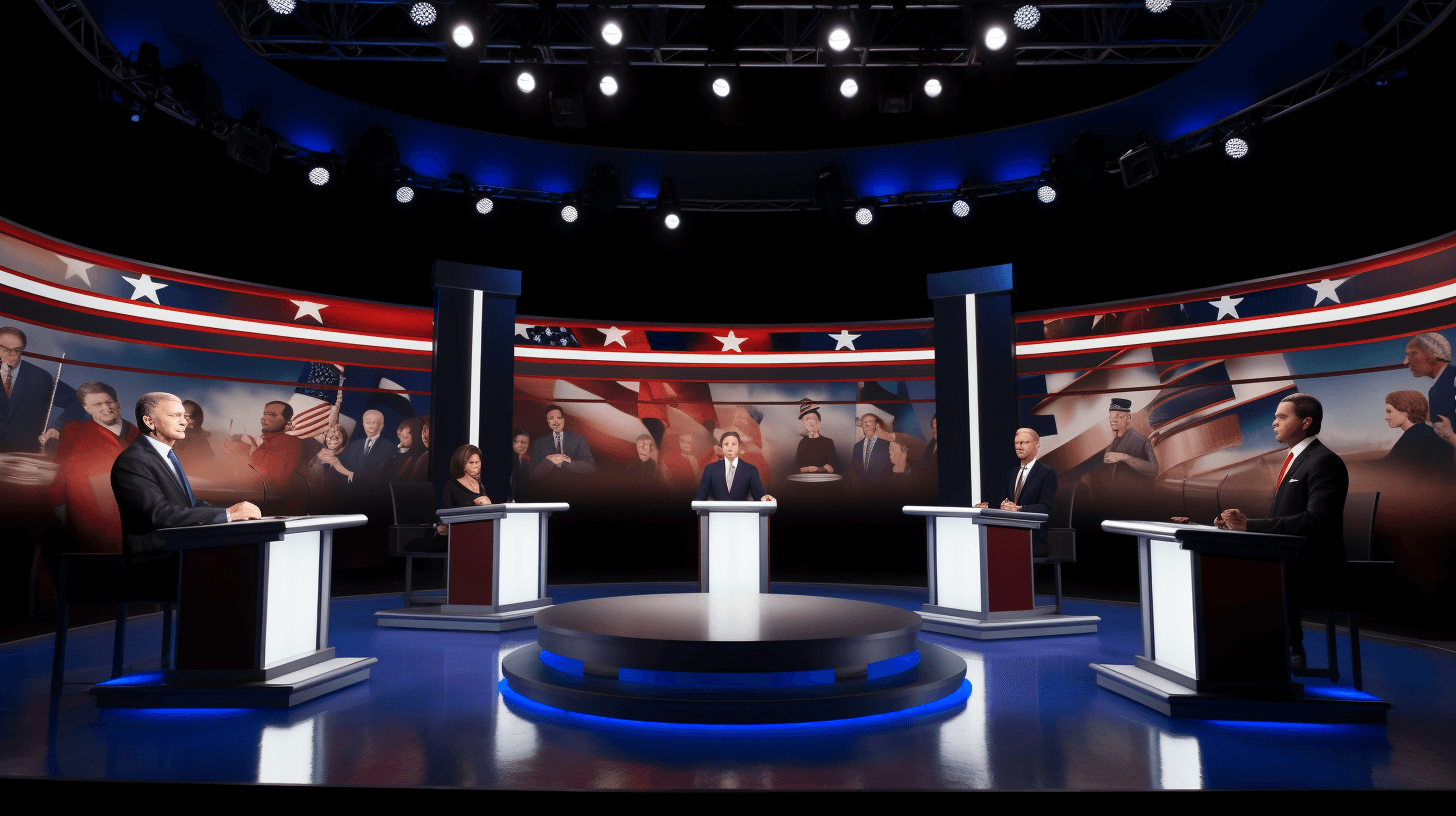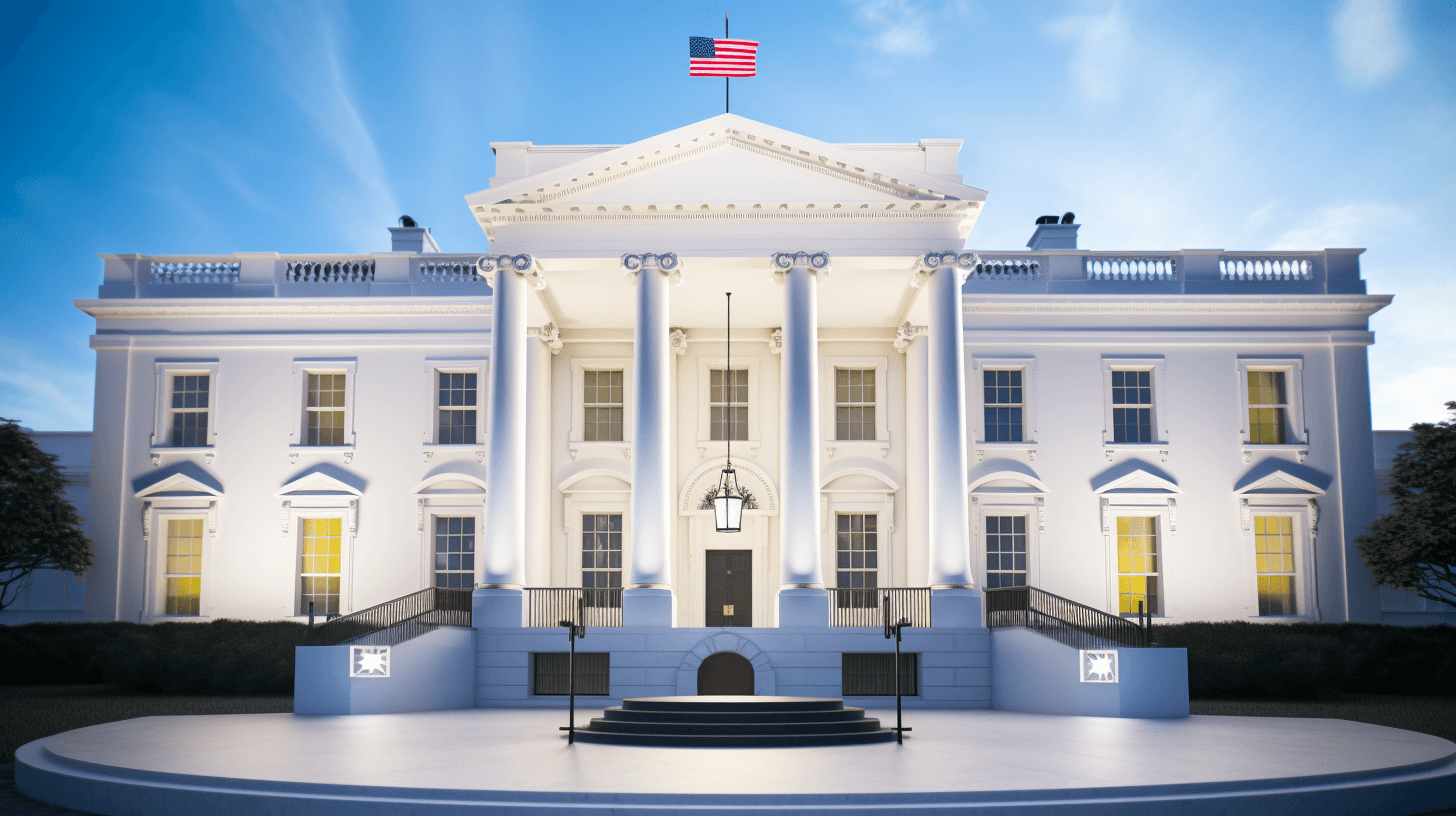🤔💸🔒 Eh, Try Try Dat Spendin’ Cap For Brake Da Standoff Kine Ting!
So, you know, da White House an’ da House Republican leaders stay fight fight ’bout how fo’ jack up da nation’s debt limit, yeah? An’ one kine idea from befo’ stay coming back as one possibility: spendin’ caps. 🏦🐘🔀💵
Dem guys stay tink ’bout puttin’ caps on future spendin’ fo’ let da borrowin’ limit go up to dat big $31.4 trillion. Dis one good ting could be da key fo’ make one deal dat let da Republicans say dey wen’ get choke concessions from da Democrats. 🗝️📈🐘🤝
Plus, it could let President Biden say his administration stay being fiscally responsible, but no need give in to da Republican guys fo’ take back any of his big kine legislative wins. 🏛️💰💡🚫
Da Biden administration an’ House Republican leaders get some agreement on broad terms fo’ some kine cap on discretionary federal spendin’ fo’ at least da next two years. But dey stay stuck on da small kine details of those caps, like how much fo’ spend on discretionary programs in da 2024 fiscal year an’ afta’, an’ how fo’ divvy up dat spendin’ among all da different kine financial obligations, like da military, veterans affairs, education, health an’ agriculture. 🤔💸👥🔄
So, how one spending cap deal might look like, yeah? 🤷♂️💸👀
Da latest White House offer like hold military an’ other spending — which get education, scientific research an’ environmental protection — stay da same from dis current 2023 fiscal year to next fiscal year, dat’s what one guy who know about both sides’ proposals stay say. But dis move no cut what dey call nominal spending, which just mean da level of spending befo’ you adjust fo’ inflation. Republicans pushing fo’ cut nominal spending in da first year. 🏦💰✂️📅
One reason why da White House open to keep spending pretty much da same get to do with politics. Since da Republicans stay in control of da House, getting one increase in funding fo’ discretionary programs outside da military was nearly impossible. Congress no would’ve approved increases through the appropriations process, da normal way Congress gives money to government programs an’ agencies. 🏛️💸⚖️👎
Da Republicans said ova an’ ova dat dey no accept one deal unless it results in da government spending less money than it did in da last fiscal year. Dey said dat just freezing spending at current levels, like da White House proposed, no make da kind meaningful cuts many in their party been calling for long time. 🐘💸🧊🔇
But da Republican negotiators showed some flexibility ’bout how long they would require those spending caps to last. House G.O.P. leaders now looking to set spending caps for six years, rather than 10. Still, dat is longer than da White House is proposing, with Democrats offering to cap spending for two years. 🐘🔄🗓️🐴
Da approach getting plenty guys feeling like dey been here befo’. If spending caps sound familiar, dat’s cuz dey was used during da last big debt limit fight in 2011. 🔄⏳🤔
During dat kine standoff, lawmakers agreed to put limits on both military an’ nonmilitary spending from 2012 to 2021. Da Budget Control Act caps was somewhat successful at keeping spending in check, but not all da way. 👥💸⚖️🔄
One report from da Congressional Research Service published dis year wen’ notice dat during da decade when da caps was in place, Congress an’ da president wen’ make plenty laws dat increased da spending limits. Certain kine expenses — for emergencies an’ military engagements — was exempt from da caps an’ da federal government spent $2 trillion ova 10 years on those programs. An’ spending on so-called mandatory programs like Social Security was not capped, an’ those make up about 70 percent of total government spending. 📝💸📈🆘
Still, da Congressional Research Service pointed out dat spending was lower each year from 2012 to 2019 than had been projected befo’ da caps was put in place. 📊⏬💰👀
Caps dat limit spending around current levels will help slow the growth of the nation’s debt, but will not cure the government’s reliance on borrowed money. Da Congressional Budget Office said dis month dat annual deficits — the gap between what America spends and what it earns — are projected to nearly double ova da next decade, totaling more than $20 trillion through 2033. Dat deficit will force the United States to continue to rely heavily on borrowed funds. 🔒💵📈💳
Marc Goldwein, da senior policy director for the Committee for a Responsible Federal Budget, estimated dat it would require $8 trillion of savings ova 10 years to hold the national debt to its current levels. Howeva, he said dat did not mean dat enacting spending caps would not be worthwhile. 💼👴🏛️💰💸
“We’re not going to fix this all at once,” Mr. Goldwein said. “So we should do as much as we can, as often as we can.” 🤷♂️🛠️💵🔄
Da group has called for spending caps to be accompanied by spending cuts or tax increases as a plan to reduce the national debt. 👥💸✂️📈🔒
Finding an agreement on the extent and duration of spending caps will be a critical part of getting a deal. But negotiators are still working to resolve several other issues, including whether to put in place tougher work requirements for social safety net programs including food stamps, Temporary Assistance for Needy Families and Medicaid, and whether to expedite permitting rules for energy projects, two key Republican priorities that White House negotiators have shown some openness to. 🤝🔄📑🍞🔋⏲️🔥
NOW IN ENGLISH
🤔💸🔒 Hmm, How About Trying a Spending Cap to Break the Standoff Situation!
So, as you know, the White House and House Republican leaders are in a heated dispute about how to raise the nation’s debt limit, right? And a previous idea is resurfacing as a potential solution: spending caps. 🏦🐘🔀💵
They are considering imposing caps on future spending to enable the borrowing limit to rise to the staggering $31.4 trillion. This could be the key to a deal that allows the Republicans to claim they extracted significant concessions from the Democrats. 🗝️📈🐘🤝
Additionally, it could enable President Biden to claim his administration is being fiscally responsible, without needing to concede to the Republicans to reverse any of his major legislative achievements. 🏛️💰💡🚫
The Biden administration and House Republican leaders have some agreement on broad terms for a cap on discretionary federal spending for at least the next two years. However, they are stuck on the fine details of those caps, like how much to spend on discretionary programs in the 2024 fiscal year and beyond, and how to divide that spending among various financial obligations, like the military, veterans affairs, education, health and agriculture. 🤔💸👥🔄
So, what might a spending cap deal look like? 🤷♂️💸👀
The latest White House offer seems to maintain military and other spending — which includes education, scientific research and environmental protection — at the same levels from the current 2023 fiscal year to the next fiscal year, according to a source familiar with both sides’ proposals. However, this move doesn’t cut what’s referred to as nominal spending, which simply means the level of spending before you adjust for inflation. Republicans are pushing to cut nominal spending in the first year. 🏦💰✂️📅
One reason the White House is open to keeping spending pretty much the same has to do with politics. Since the Republicans control the House, securing an increase in funding for discretionary programs outside of the military was nearly impossible. Congress wouldn’t have approved increases through the appropriations process, the standard way Congress funds government programs and agencies. 🏛️💸⚖️👎
The Republicans have repeatedly stated they won’t accept a deal unless it results in the government spending less money than it did in the last fiscal year. They said that simply freezing spending at current levels, as the White House proposed, doesn’t achieve the significant cuts many in their party have been calling for. 🐘💸🧊🔇
However, the Republican negotiators have shown some flexibility about how long they would require those spending caps to last. House GOP leaders are now looking to set spending caps for six years, rather than 10. Still, that is longer than what the White House is proposing, with Democrats offering to cap spending for two years. 🐘🔄🗓️🐴
The approach seems familiar to many. If spending caps sound familiar, that’s because they were used during the last major debt limit fight in 2011. 🔄⏳🤔
During that standoff, lawmakers agreed to put limits on both military and nonmilitary spending from 2012 to 2021. The Budget Control Act caps were somewhat successful at keeping spending in check, but not entirely. 👥💸⚖️🔄
A report from the Congressional Research Service published this year noted that during the decade when the caps were in place, Congress and the president passed numerous laws that increased the spending limits. Certain expenses — for emergencies and military engagements — were exempt from the caps and the federal government spent $2 trillion over 10 years on those programs. And spending on so-called mandatory programs like Social Security was not capped, and those make up about 70 percent of total government spending. 📝💸📈🆘
Still, the Congressional Research Service pointed out that spending was lower each year from 2012 to 2019 than had been projected before the caps were put in place. 📊⏬💰👀
Caps that limit spending around current levels will help slow the growth of the nation’s debt, but will not cure the government’s reliance on borrowed money. The Congressional Budget Office said this month that annual deficits — the gap between what America spends and what it earns — are projected to nearly double over the next decade, totaling more than $20 trillion through 2033. That deficit will force the United States to continue to rely heavily on borrowed funds. 🔒💵📈💳
Marc Goldwein, the senior policy director for the Committee for a Responsible Federal Budget, estimated that it would require $8 trillion of savings over 10 years to hold the national debt to its current levels. However, he said that does not mean that enacting spending caps would not be worthwhile. 💼👴🏛️💰💸
“We’re not going to fix this all at once,” Mr. Goldwein said. “So we should do as much as we can, as often as we can.” 🤷♂️🛠️💵🔄
The group has called for spending caps to be accompanied by spending cuts or tax increases as a plan to reduce the national debt. 👥💸✂️📈🔒
Finding an agreement on the extent and duration of spending caps will be a critical part of getting a deal. But negotiators are still working to resolve several other issues, including whether to put in place tougher work requirements for social safety net programs including food stamps, Temporary Assistance for Needy Families and Medicaid, and whether to expedite permitting rules for energy projects, two key Republican priorities that White House negotiators have shown some openness to. 🤝🔄📑🍞🔋⏲️🔥







